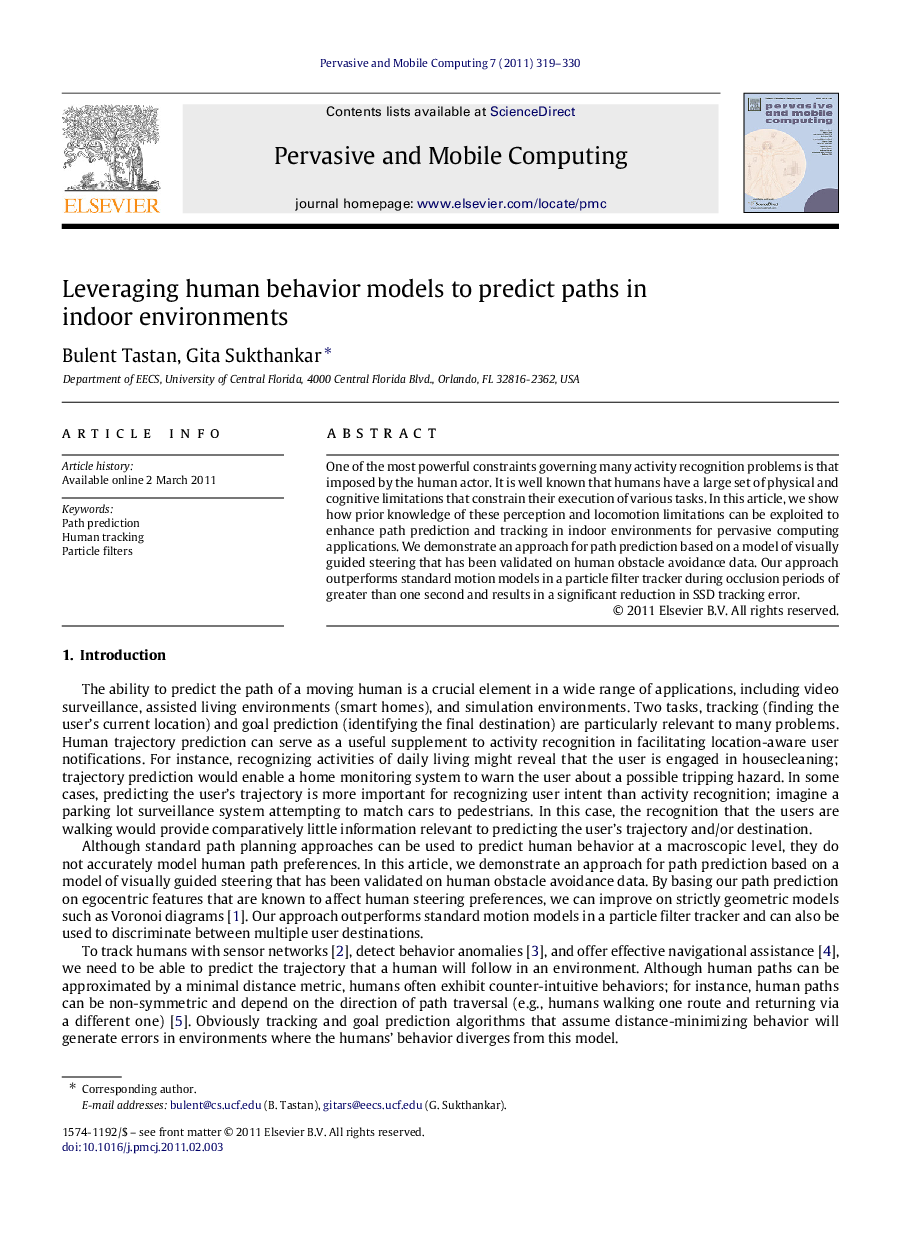| Article ID | Journal | Published Year | Pages | File Type |
|---|---|---|---|---|
| 465653 | Pervasive and Mobile Computing | 2011 | 12 Pages |
One of the most powerful constraints governing many activity recognition problems is that imposed by the human actor. It is well known that humans have a large set of physical and cognitive limitations that constrain their execution of various tasks. In this article, we show how prior knowledge of these perception and locomotion limitations can be exploited to enhance path prediction and tracking in indoor environments for pervasive computing applications. We demonstrate an approach for path prediction based on a model of visually guided steering that has been validated on human obstacle avoidance data. Our approach outperforms standard motion models in a particle filter tracker during occlusion periods of greater than one second and results in a significant reduction in SSD tracking error.
